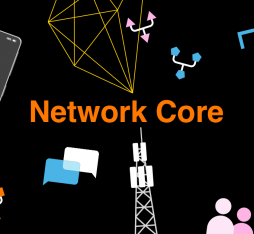Thanks to 5G, trainers can be completely autonomous in the end-to-end production of video content, from recording to streaming, even on-the-go.
Like many other sectors, workplace learning (AFEST — action de formation en situation de travail) has been implemented very differently since the start of the year due to the pandemic situation. Remote learning has become more important than ever, reaffirming the value of the digitalisation and innovation processes that began a few years ago.
A digital-driven transformation
Since the start of the third millennium, the methods and apparatus used for training have been gradually evolving, as technology matured and its uses transformed. The health crisis is amplifying this progress. Ahmed Kabeche, Head of Technical Business School at Orange, explains: “The way in which we learn has changed. The school provides one million hours of training per year and about 80% of that is in-classroom teaching. Of course, the COVID-19 pandemic has disrupted this pattern and made us think about changing how we work and moving towards blended learning, which combines classroom teaching with remote learning. Videos play an important part in that blend. They allow training to be taken beyond training rooms, they speed up the remote transfer of knowledge and foster a situation where ultimately everyone in the company will able to gain and transfer skills.”
Kalyzée, making video training child’s play
However, creating audiovisual content for training purposes demands time and expertise. It is also, in general, no small feat of engineering. Such were the obstacles that Stéphane Barbati, who had been a professor and researcher at Aix-Marseille University for 15 years, was studying before arriving at an innovative solution. In 2014, he founded the start-up Kalyzée and introduced the Kast solution, an ultra-packaged high-performance camera, which covers the entire value chain of audiovisual production, from filming to streaming, with encoding and mixing along the way. “We designed this camera as a business solution for training organisations, which account for 80% of our customers”, explained Stéphane Barbati. This camera allows users to be completely autonomous as they record and stream video content without needing any particular expertise in this field. End-to-end production AI is actually embedded in the camera, structured around a Linux-based ad-hoc OS made up of open source building blocks, including the GStreamer library.” Capable of managing and mixing two audiovisual streams (e.g. a video of the trainer and a recording taken from a PC presentation tool), Kast offers the choice of one of four pre-programmed displays for live or VoD streaming.

5G to help with the ramp-up and new uses
Kalyzée has now released the third generation of Kast and has already distributed 350 of these cameras around France. The start-up is working to expand the solution’s on-the-go uses, thus creating more interactivity between the classroom and the remote learners tuning in via video conference. It needs to significantly ramp up connectivity in order to deliver an optimal experience in terms of both performance and security. With support from Orange—Kalyzée is one of the winners of the Orange Fab 5G competition—the Kast solution has started experimenting with 5G networks, thus beginning its 5G transition. “We are one of the first five companies to test 5G in Marseille, and have been for a year now. The next generation of mobile networks represents a key enabler, first and foremost in terms of addressing network access problems in universities and training rooms more generally. Mobility is a defining feature of our solution and it can sometimes be hampered by IT constraints. The performance and functionality of 5G also improve the streaming experience: less latency, greater bandwidth and so on. Moreover, with network slicing, it also promises easy and dedicated access to secure network resources on demand. The new network is a terrific opportunity to move towards increasingly small, embedded and intelligent solutions that are tailored to business needs.”
This is why the Technical Business School at Orange is invested in Kast. “Videos let us experiment with a new type of training engineering”, says Ahmed Kabeche. Training rooms become rooms of connection, and we’re able to put trainers in touch with learners in remote locations around France. Our training courses are becoming increasingly focused on blended learning, and digital trailblazers are getting into position around the country to support the use of innovative digital tools like the Kalyzée camera.”











